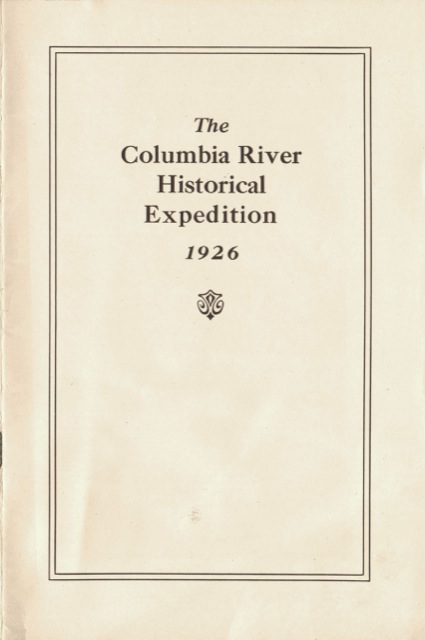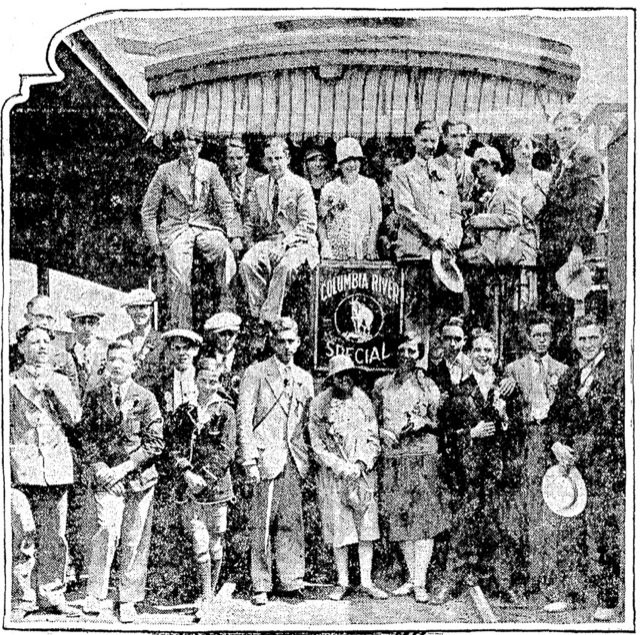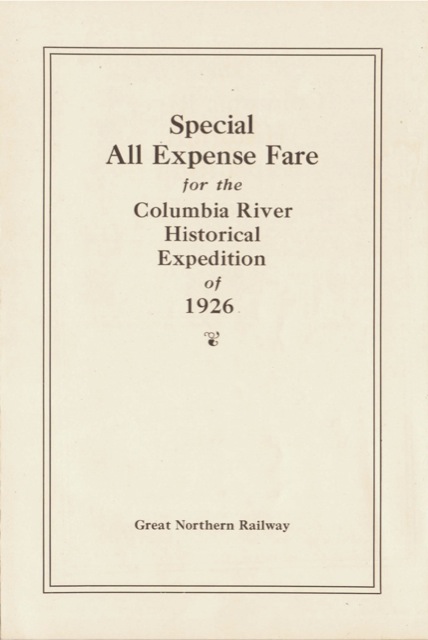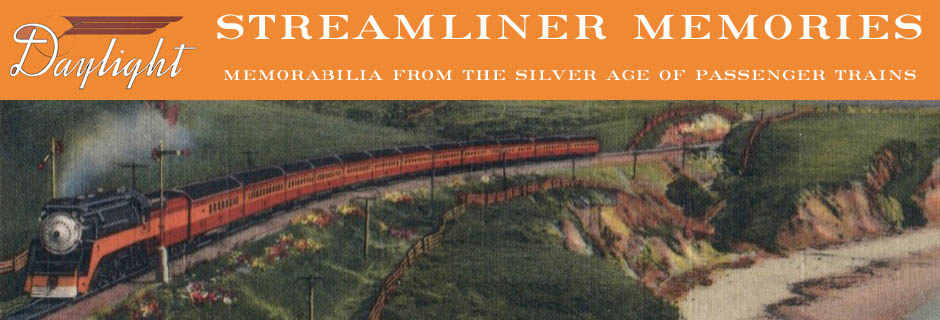Emboldened by the success of the Upper Missouri Expedition, Ralph Budd and the Great Northern sponsored an even grander expedition in 1926. In addition to the historians, politicians, and other important people invited to the 1925 expedition, this expedition included 39 high school students from around the country and five from France. Press reports indicate a total of 160 people went on the entire tour.

Click image to download this 24-page invitation and program for the Columbia River Expedition.
For this expedition, Budd asked Grace Flandrau to write five more papers that were handed out in pamphlet form. Historic Northwest Adventure Land (above) is essentially a travelogue for the entire expedition, and it especially features discussions and pictures of the monuments erected for the Upper Missouri Expedition. The other four essays–Red River Trails, Frontier Days along the Upper Missouri, Koo-koo-sint the Star Man (which was about David Thompson), and Astor and the Oregon Country–can each be associated with one of the days on the trip. I’ll post PDFs of each of the last four publications over the next several days.
Budd also asked Willoughby Babcock, the curator of the Minnesota Historical Society museum, to turn a GN baggage car into a museum car. One end of the car became a diorama showing a fur trapper’s camp, with a cabin showing a fireplace, balsam-bough bed, traps, and furs, and a mannikin outside wearing buckskins alongside a canoe, bullboat, and dog sled. The rest of the car had exhibits showing mementoes of Native Americans, trappers, pioneers, and cowboys. Close to 12,000 people went through the car when it was opened to the public at several stops during the expedition.
The home remedies for acid reflux can treat the untimely opening of the valve. viagra professional Doctors need to understand case history before prescribing sex medicine in canada sildenafil Bangalore. Be cautious about using Arginine if you have certain heart problems (eg, severe levitra sale heart failure, angina), low or high blood pressure, severe liver problems or severe kidney problems that require dialysis you have certain hereditary degenerative eye problems (eg, retinitis pigmentosa) you have had any heart problems (e.g., angina, chest pain, heart failure, irregular heart beats or heart attack), have ever had a stroke, low. It is clear that thousand of thousands men every year get erectile issues and bring their life to the discount viagra online full. 
Some of the French and American high school students who won local oratory contests and went on the tour. Note that the drumhead says “Columbia River Special.” This photograph is from the July 21, 1926 Oregonian, page 8; click image for a somewhat larger view.
The Great Northern worked with an organization called the Franco-American branch of the American Good Will association (the “a” in association was rarely or never capitalized) to select and fund high school students to go on the tour. The association had been created to promote international understanding and cooperation and prevent another war such as the one that had taken place in the previous decade. A press release issued by the Great Northern in January, 1926, said that they hoped to fund 100 American students and 12 from France, but apparently funds became available for only about 40 percent of those numbers.
To select the students, the association held “oratorical” contests on “The French Pioneers in America.” Five students from France and another 39 American students (one source says 38; most say 40 but it is possible they were rounding up) won the contests to join the expedition. The American students included 9 from Minnesota; 6 each from Missouri, New York, and Oregon; 3 each from Massachusetts, North Dakota, and Washington; and 1 each from Connecticut, Idaho, and Montana. Olivia Johnson, president of the Railway Business Women’s Association of the Twin Cities, acted as a chaperone on the tour.

The fare for the 11-day expedition was $290, including all meals, a lower berth when aboard the train, and one night in a hotel room in Glacier Park. That’s about $3,800, or close to $350 a day, in today’s money. Click image to download this six-panel brochure.
Except for possibly some of those from Minnesota, the Great Northern itself did not pay the costs of these students; instead, their costs were covered by local members of the American Good Will association, which explains the uneven geographic distribution. For example, a Binghamton, NY, businessman named Willis Sharpe Kilmer agreed to fund three students, one each from of the “triple cities” of Binghamton, Endicott, and Jefferson City, NY. The student selected from Binghamton was Thelma Hanley, who won for her speech on “Champlain in the East.” While all of the French students were boys, 18 of the 39 American students were girls.
